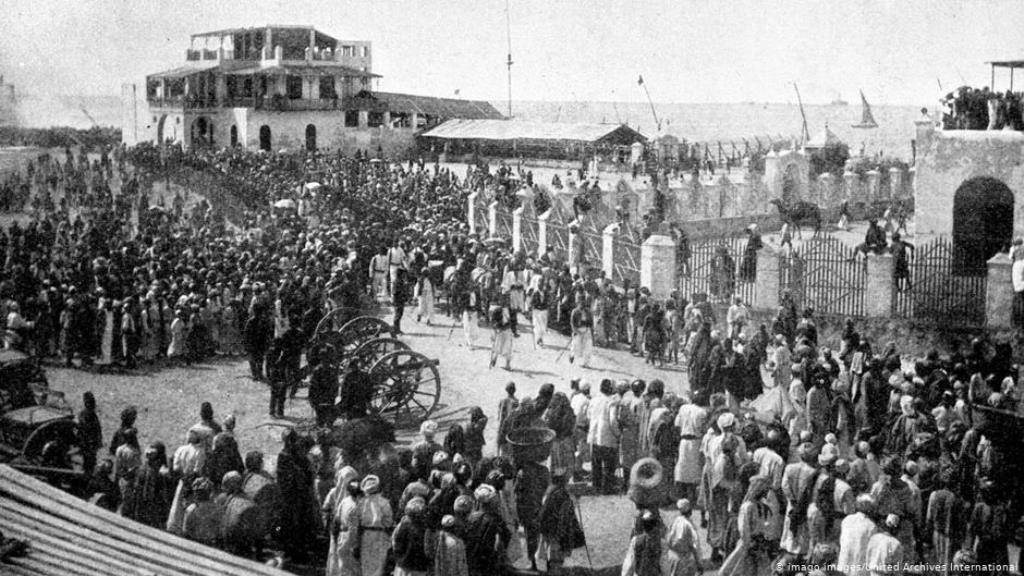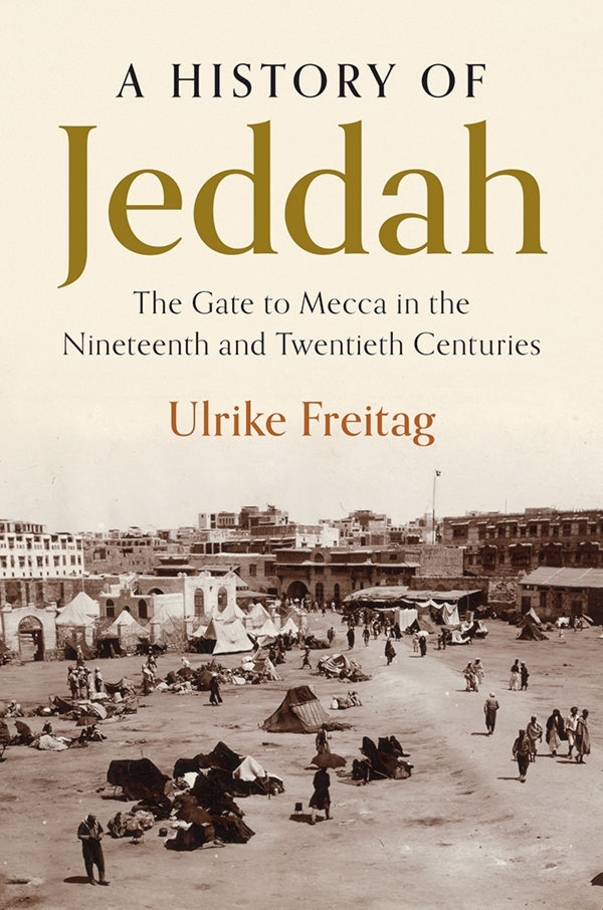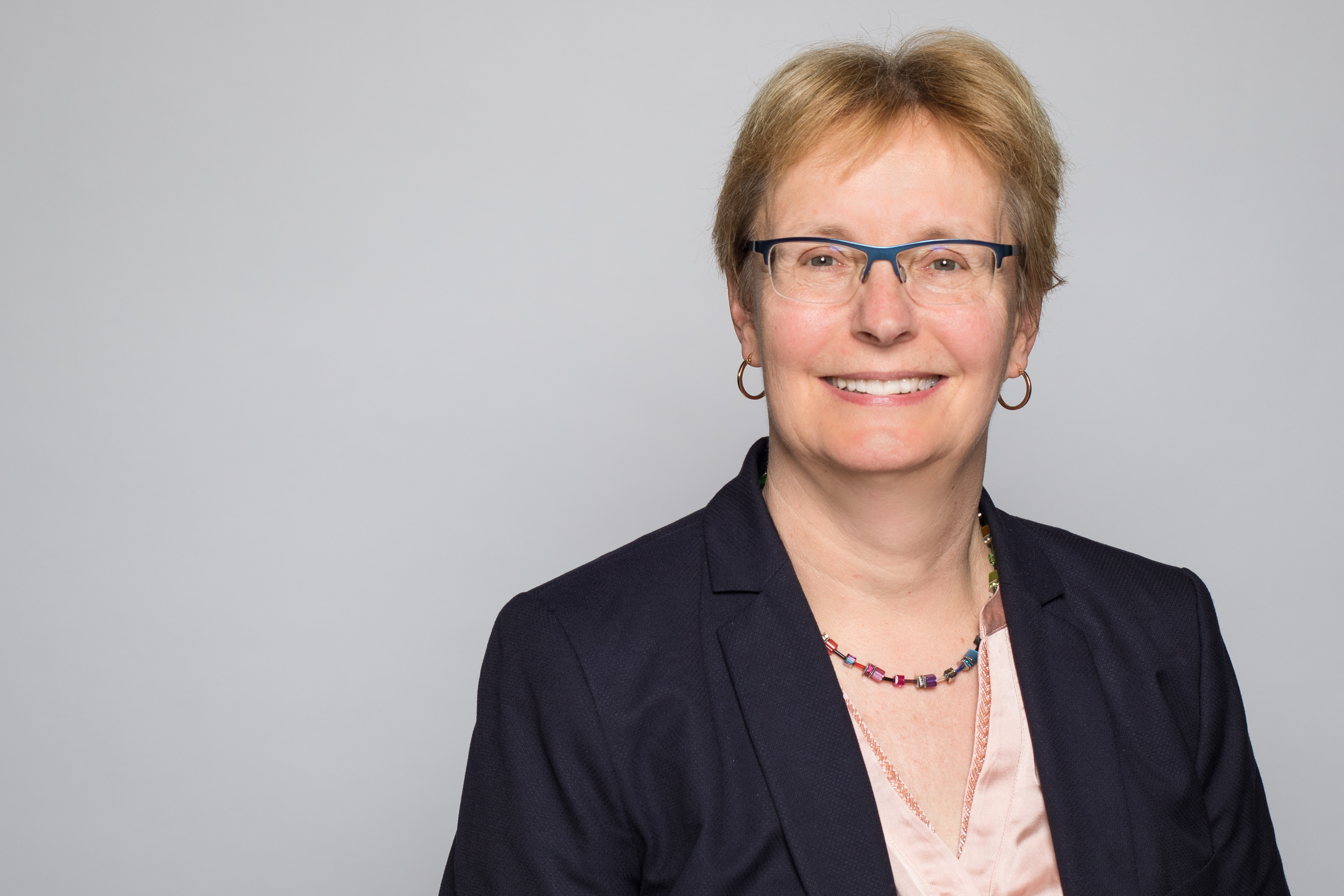The legacy of Jeddah's migration history lives on

Ms Freitag, you have spent 15 years researching the history of the city of Jeddah in modern-day Saudi Arabia. There were other, more significant cities in the Ottoman Empire, why choose Jeddah?
Ulrike Freitag: For a long time, Jeddah functioned as a hinge in the trade between the Mediterranean region and the Indian Ocean. Using nineteenth- and early-twentieth-century Jeddah as a starting point, I began investigating an early phase of globalisation in Jeddah and beyond. You can see the most varied of influences in Jeddah, something that is reflected in the character of the city to this day. In Jeddah, people say Jeddah Ghair, which means Jeddah is different.
You use this motto as a framework for your book "A History of Jeddah". What is it that makes this city different? And different from which other cities in particular?
Freitag: Jeddah was and is different from other Saudi cities because the people who live there have roots all over the world: in India, Egypt, Iran, Morocco and other regions. You can see it in the food culture, but it is also evident in the openness that is typical of port cities, but is particularly striking in the Saudi context, especially when compared with the Saudi capital, Riyadh, and Saudi cities that have been shaped more by the Bedouin culture.
Western Saudi Arabia was part of the Ottoman Empire. Jeddah has only been under Saudi role since the 1920s. How do the people of Jeddah see themselves?
Freitag: As was the case throughout the Ottoman Empire, Ottoman identity was a phenomenon that really only existed among the elite. In Jeddah, most people who see themselves as being members of old families see themselves as Saudis. That said, the legacy of their migration history lives on, not only in family names, but also in specific family traditions. They are consciously kept alive as part of the city's multicultural identity.
In other words, Arab ancestry plays a subordinate role, although Jeddah is situated close to the holy cities of Mecca and Medina?
Freitag: On the one hand, the city's historical multiculturalism is extolled; on the other, people who hail from India or Iran are also at pains to point out that they have Arab roots. This is part of a trend that can be seen elsewhere on the Arabian Peninsula too. People put emphasis on Arabism and seek to establish links to important tribes, to draw a genealogical line.

Is that not a contradiction in terms – multiculturalism and the simultaneous focus on Arabism?
Freitag: Many old families in Jeddah say that that they originally came from the peninsula, spent hundreds of years travelling the world, and then eventually came back. On the one hand, this is a nod towards the Arabism trend I mentioned earlier. On the other, it is a defence against the accusation of being just a remnant of the pilgrimage to Mecca and not having any local roots. People who live in Jeddah are sometimes referred to as turschat al-bahr (thrown up by the sea) or baqayat al-hadsch (remnants of the hajj). In this respect, genealogy is a strategy, a way of safeguarding their place in Saudi society.
What is meant by "remnants of the hajj"?
Freitag: In addition to trade, the pilgrimage to Mecca, the hajj, has shaped this city. Legend has it that Uthman, the third Islamic caliph, declared Jeddah to be Mecca's port. As economic interconnections grew and steam ship travel increased in the nineteenth century, more pilgrims than ever before travelled by sea, coming ashore in Jeddah. All of this contributed to the multicultural character of the city. What's more, we must not forget that the Red Sea is very narrow. From earliest times, there have been links to Sudan and the Horn of Africa. Both pilgrims and migrant workers came from this region. Of course, the extensive trade in slaves shaped the city too.
From slavery to the migration of labour
You write that in the 1880s, slaves made up about one-fifth of the population of Jeddah. What role did they play?
Freitag: One could be cruel and compare them to some with today's migrant workers. Back then, most of the housework in rich families was done by slaves. The work at the port, the loading of packages, the rowing of small boats, the carrying of goods from the port through customs to the warehouses ... all of that was done by slaves too.
Were there only male slaves?
Freitag: No, most of the domestic slaves were women. Washing laundry, fetching water, preparing food for the pilgrims: these were just some of the typical tasks done by female slaves. Many slaves became concubines and bore children, who were then seen as descendants of the free men, with the same rights, for example – including rights of succession – as their legitimate children. In this way, the offspring of female slaves became part of the local population.
This is virtually impossible for today's female migrant labourers.
Freitag: The situation today is entirely different. Guest workers are only there for a certain length of time; slaves, on the other hand, could be sold on to other people. Essentially, however, they were part of the household. The children of slaves grew up with the local children; today, the children of guest-workers go to different schools. Today, if a servant were to give birth to a Saudi man's child, she would – if she were lucky – be sent straight home. Back then, she was a fixture in the household.
Was that an advantage?
Freitag: When children were born, the mothers were at best given their freedom. In the vast majority of cases, however, they were no longer sold on to someone else and had at least some kind of social security. The slaves did not have any family of their own to support them; they relied on building up helpful social relationships. The sale of a slave repeatedly broke up these relationships, which meant that women were more exposed to violence and abuse. The stories are just horrific. One former slave told me in an interview that for her, the key thing was that she could no longer be sold and torn out of her social context.
Slavery was only abolished in Saudi Arabia in 1962. Do former slaves still live in the country?
Freitag: Yes, where else were they supposed to go? As a rule, they assumed the names of the families for whom they had worked and continued to work for them. Today, they are often to be found in the larger entourages of certain notables or royal princes. You can often see much darker skinned people in official delegations. These people are generally former slaves who still have close ties to a prominent family.
So former slaves are still dependent?
Freitag: Not necessarily, there are individual cases where former slaves or their children have taken over the family business. But these are the fortunate exceptions to the rule.
Is there any kind of societal debate about slavery in Saudi Arabia?
Freitag: I have never heard any kind of critical reappraisal of slavery of the kind currently getting underway in Turkey. There are novels with slavery as a theme, but there has been no form of post-colonial debate about the subject in Saudi Arabia.

Jeddah and the Wahhabis
In the mid 1920s, the House of Saud took control of the holy sites and of Jeddah. What impact did this have on the city?
Freitag: There were cultural changes. Prostitution, the consumption of alcohol and music – which are par for the course in every port city – were banned. Religion changed too. The Saudis adhered to the Wahhabi interpretation of Islam, a rigid interpretation of the religion that was staunchly opposed to any kind of veneration of saints. For instance, the Tomb of Eve outside Jeddah was destroyed. Nevertheless, it is still visited by pilgrims to this day. Sufism too, which had had a major influence on religious practices in the city, was suppressed.
Your book is crammed full of details. You write about sporting competitions, early hooliganism and even a women's carnival in Jeddah. How did you do your research for this?
Freitag: I gleaned a lot from British and French consular sources and used a lot of Ottoman and Arab sources. I trawled through old newspapers and tried to uncover local family stories, some of which had been printed privately and were only available within families. There is also a culture of remembrance literature that has taken root in various newspapers. It was hard to access documents being held by municipal authorities or local court and police documents, which often provide profound insights into the social life of a city.
As a historian, how did you dig up family stories that had not been published?
Freitag: With the help of the snowball principle: I began by just asking around if anyone knew somebody from a prominent family. I was quickly directed towards people who had stories to tell. If you do that for long enough, you make contact with a lot of families. I also gave public lectures in Jeddah, which got me in touch with other contacts.
Were you greeted with scepticism because you are a female European academic?
Freitag: There are always people who don't respond to e-mails or telephone calls. You have to assume that they are not thrilled about a foreigner researching their city. But in general, I have to say that families were incredibly helpful and were very happy to give me family documents – in those cases where there was something to share. The municipal authorities were a much tougher nut to crack.
The period you researched ends in 1947, when the walls of Jeddah were torn down. Are pilgrimage and trade still as important for the city as they used to be?
Freitag: Jeddah is still an important port, but it has lost the key function it used to have in the past. Nowadays, there are other, more important container ports on the Arabian Peninsula. As far as the pilgrimage to Mecca is concerned, Jeddah Airport is now the gateway into Saudi Arabia for pilgrims. Many pilgrims stay in the country – and particularly in Jeddah – for a while after the hajj. The Saudis are now trying to build up this sector, which it calls "religious tourism", one of the key pillars of Crown Prince Mohammed bin Salman's "Vision 2030".
Interview conducted by Jannis Hagmann
© Qantara.de 2020
Translated from the German by Aingeal Flanagan
Professor Ulrike Freitag is a Middle East historian and director of the Leibniz Center for Modern Oriental Studies in Berlin. Her book "A History of Jeddah. The Gate to Mecca in the Nineteenth and Twentieth Centuries" was published by Cambridge University Press in February 2020.